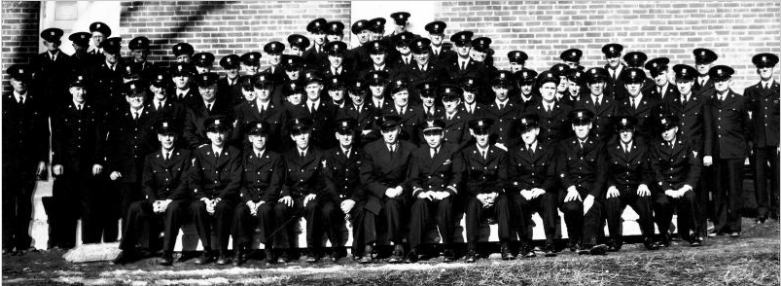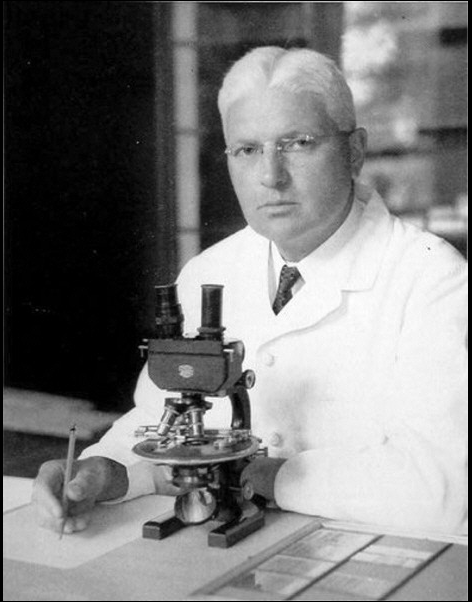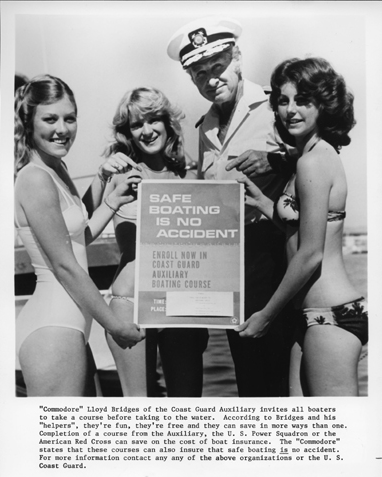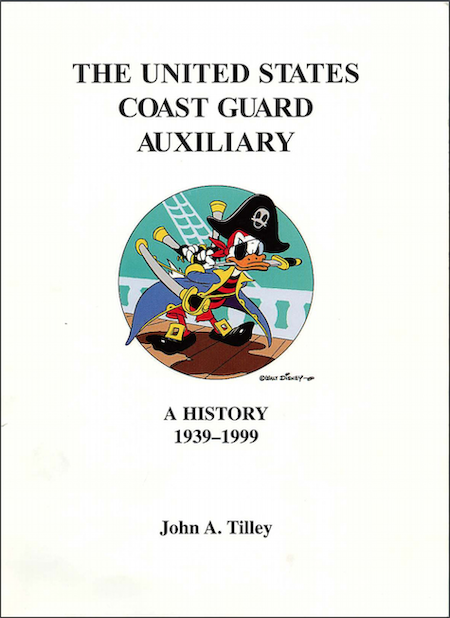Return to A-Directorate's Home Page.

 This 1943 or 1944 group photo of the local Coast Guard Auxiliary during World War II came from Chester Swett, a member of the wartime auxiliary. Some of the 69 men in the photo have been identified: Chester Swett, Warren Hume, Asa Tupper Sr., Asa Tupper Jr., Cliff Huskins, Frank Dunton, Mike Marshall, Drummond Giles, Lyman Pinkham, John Roberts, Miles Plummer Jr., and Buster Boyd.
This 1943 or 1944 group photo of the local Coast Guard Auxiliary during World War II came from Chester Swett, a member of the wartime auxiliary. Some of the 69 men in the photo have been identified: Chester Swett, Warren Hume, Asa Tupper Sr., Asa Tupper Jr., Cliff Huskins, Frank Dunton, Mike Marshall, Drummond Giles, Lyman Pinkham, John Roberts, Miles Plummer Jr., and Buster Boyd. Photo from Barbara Rumsey, Boothbay Region Historical Society.
The History Division of the Auxiliary Public Affairs Directorate is dedicated to the collection, preservation, and promulgation of information and materials that pertain to events and persons important to the history of the U. S. Coast Guard Auxiliary. The national historian's staff collects and promulgates information that relates to national events, national officers, and members who have made historic contributions. District historians are tasked with collecting and preserving information on the histories of their flotillas and divisions within the geographical regions of their Coast Guard Districts. All members can participate in collecting information, training members, and informing the public of our proud history and traditions. Materials collected include documents, photographs, and significant artifacts, such as uniforms, flags, commemorative items, etc. See the duties of district historians on this website for more specific information on how members can participate.
Although long-time members had always been aware of the Auxiliary's record of service and historians sometimes had been appointed to promote our history , efforts to maintain the Coast Guard Auxiliary's history has been inconsistent. The Auxiliary history program was formally established during the 50th anniversary celebration of the Auxiliary in 1989. Executive staff members were aware that documents resided in members' basements, offices, and garages all over the country. There had never been a focused attempt to collect them. Thus, in 1989, O. W. "Sonny" Martin, Jr., of Madison, Wisconsin, was appointed the National Historian. Sonny was a decorated World War II veteran and a retired army colonel who had held the position of director of administration of the Wisconsin State Historical Society. For years, Martin spent endless hours writing members all over the country, asking for records members or family members held and taking on special projects such as researching auxiliary regulations, conducting oral histories, compiling complete sets of Navigators and district publications, etc., and a short history of the Auxiliary was written, largely due to the hard work of Auxiliarist Harriet Howard.
A contract also was entered into with the Joyner Library at East Carolina University (ECU) in Greenville, North Carolina, to house the national records collection which would be presided over by a professional curator. Eastern Carolina is a leader in the field of maritime history and underwater archaeology. By 1999, ECU had compiled an impressive archive of Auxiliary materials, thanks largely to the work of the district historians. (Today, the Auxiliary History Division includes an “Archives Branch,” which serves as a liaison to the Joyner Library.)
The history staff went all out to celebrate the Auxiliary's 60th Anniversary in 1999. They recognized this would be the last opportunity to honor the contributions of World War II Auxiliary members of which there were two remaining members at the time. C. Kay Larson had been appointed the Auxiliary Historian’s Office branch chief for research and publication in 1994. She spearheaded a three-year research project, utilizing ECU and other sources, to develop an exhibit at the Coast Guard Academy and a history video. The exhibit opened in April 1999, titled "The Rise of Pleasure Boating and the Coast Guard Auxiliary," that tracked the parallel trends in boating and Auxiliary history. Much of the same material was utilized to produce a 24-minute video documentary, "A Proud Tradition, A Worthy Mission: The History of the Coast Guard Auxiliary 1939-1999," which should still be available through DSO-MAs. During this same time Sonny and Kay worked with the late John A. Tilley of East Carolina University to publish the first complete history of the Auxiliary that came out in 2002. Tilley’s The United States Coast Guard Auxiliary, 1939-1999: A History (Washington, DC: GPO, 2003) is available online
With Sonny's passing in 1999, he was posthumously awarded the Auxiliary's Distinguished Service Medal. The torch was passed to Kay Larson, who an independent scholar, specializing in the Civil War, World War II, political, maritime, and women's military history. Since 2000, the history program has concentrated on developing its webpage which has entailed research and writing. A “historian's guide” has been produced and posted for the use of district historians and members as well. A footnoted milestone dateline is available. The online Auxiliary bibliography, which is part of the Coast Guard's overall history bibliography, is in the midst of being updated. A complete honor roll of Auxiliary Gold and Silver Lifesaving Medalists and Plaque of Merit awardees is available for viewing. Complete text articles have been posted. The Coast Guard Art Program is publicized by the history program. Meantime, history staff have been compiling oral histories, statistics, and reports of significant events.
In 2015, Dr. Darin Lenz, a history professor at Fresno Pacific University, oversaw what was then called the “History Branch” of the Public Affairs Directorate, expand to become the “History Division,” which was comprised of three distinct branches: Museums, Archives and Liaison to the USCG Historian’s Office. Then, in 2018, the Liaison Branch was expanded to include six branch-assistant positions: Atlantic Historian Liaison; Pacific Historian Liaison; Oral History Interviewer; Researcher; Writer; and Publisher. That same year, Dr. Mark A. Snell, a retired Army officer and a retired history professor, replaced Dr. Lenz as “Chief Historian of the Auxiliary” and Division Chief, History. Snell previously had served as Branch Chief, USCG Historian’s Office Liaison, and worked with Dr. Lenz to reorganize the division in 2018.
The current History Division not only collects and disseminates Auxiliary history, but its staff officers have taken on the role of “Operational Auxiliarists” in support of the USCG Historian’s Office at Coast Guard Headquarters and with the Atlantic-Area and Pacific-Area historians. Auxiliary historians have written articles for active-duty publications, have spoken and participated at national commemorations (such as the 100th Anniversary of the loss of the Tampa and the 75th Anniversary of D-DAY), have conducted oral interviews following catastrophic events, and have contributed online publications.
 |
Edgar Allen (May 2, 1892 - February 3, 1943) was an American anatomist and physiologist. He is known for the discovery of estrogen and his role in creating the field of endocrinology. Allen was a "Junior Commander" in the Auxiliary. He died of a heart attack while on anti-submarine patrol off the Connecticut coast in 1943.
 |
Auxiliary National Chief Historian's "Top 10" Reading List (New as of Feb 2021)
Historian Guide - PDF File

U.S. Coast Guard Historian's Office
Foundation for Coast Guard History
U.S. Coast Guard Cutter Ingham (WHEC-35) Maritime Museum
United States Coast Guard Academy History
U.S. Coast Guard Cutter Machinaw (WAGB-83) Maritime Museum
Lighthouse Friends - Historical visit of every lighthouse in the United States & Canada
Lightship Overfalls - A National Historic Landmark
Historic Ships in Baltimore - Experience 19th Century Life at Sea
Museum Ships - Preserving the past for the future
U.S. Life-Saving Service Heritage Association
National Park Service - Historic Lighthouses & Light Stations
National Park Service - Historic Life-Saving Stations
Guardian Spies - U.S. Coast Guard Secret Intelligence in WWII

Disclaimer
As you will see, our website has many links to our partners, especially other Federal Agencies. In a few cases we link to private organizations. When you link to another site, you are no longer on our site and are subject to the privacy policy of the new site.
Many of these websites are not under our control so we cannot be responsible for them nor the content found on them. Please report any BROKEN link(s) to us using the National Help Desk link in the left side menu of this website so we can locate a replacement link or remove the broken link(s).
